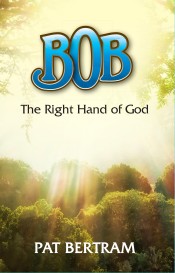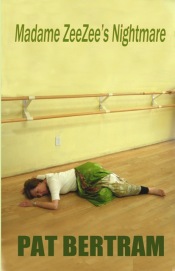Interesting characters make interesting stories, not the other way around. Cardboard cutouts and comic book heroes serve the needs of many popular books today, but I want more than that for my current work. A tongue-in-cheek apocalyptic novel, it could easily dissolve into foolishness without a well-developed character to give it credibility. During my last few posts, I have been profiling this character, but he is still not fleshed out. He needs physical characteristics, though not all characters are defined by the way they look. If I remember correctly, Mark Twain never described Huckleberry Finn.
Does it matter what my character looks like? I won’t know for sure until I start writing the book, but I doubt it. He is an ordinary guy who becomes extraordinary because of all he endures. Now that I think about it, that is the basic plot of all of my books, and one I never get tired of reading or writing. I realize that to sell in this tight market, a book has to immediately capture the attention of an agent, an editor, a reader, and to do that you need more than an average guy. But I am so tired of reading about gutsy females, stone-cold business executives, leftover war heroes, beaten-down cops, bitchy/successful/beautiful/rich women, muscle-bound gunslingers, that an average guy suits me and my story just fine.
My main characters all tend to be stoic, which make them seem unbelievable or standoffish. Most people like to experience emotions vicariously, and if characters react stoically, it makes it hard for readers to identify with them. So I need a character tag: a habit or trait that helps Chip stand out from the page. It’s a simple thing, but I decided he likes candy — not just any candy, but something specific like licorice or butterscotch. He always carries a few pieces with him, and then one day not long after the world ends, he reaches into his pocket for a candy that isn’t there. This, more than anything else he has experienced, tells him that the world he knew is gone, and his stoicism slips. Does he cry? Scream? Have a temper tantrum? Throw things?
I don’t know. I guess we’ll find out after I write the book.









January 12, 2008 at 3:59 am
How about some kind of old-fashioned candy? And nothing chocolate, because that would melt in his pocket. I am rather partial to licorice myself, but apparently eating too much can give you heart palpitations, so keep that in mind for your character. What about Lemonheads? Or Cow Tails? Or Good and Plenty’s? Or (god forbid) candy cigarettes? They are all sweets I remember fondly from my childhood.
I love the idea of using a tag to give my characters extra zip, I might borrow that for my next book. Where did you hear of the idea, or did you make it up yourself?
I think he will cry and then get angry.
January 12, 2008 at 1:05 pm
You caught me! I suggested licorice or butterscotch because I didn’t want to give away the real candy — lemon drops (are those Lemonheads?) The problem with lemon drops is that they are not wrapped, which means the added ceremony of packaging up his daily allotment so they can fit in his pocket without getting sticky.
Candy cigarettes is a good idea — but perhaps not for this character. I loved that wintergreen flavor! I wonder if they still make them?
As to character tags: remember David Rosansky, the publisher who panned the first chapter of my book, More Deaths Than One, during the contest? Among other things, he didn’t like my use of pronouns, and said I needed to use character tags. I wrote him a note thanking him for the critique, and said something to the effect that I must be more ignorant than I thought, because I had never heard of character tags. He wrote back:
“Characterization tags are little phrases, words or style that allows the reader to clearly differentiate the character. For example, a character may always speak with a Texan drawl and with word choices to match. Another character may demonstrate a certain level of vanity by constantly fluffing up her clothes and freshening her makeup. Another character might have a manner of constantly moving his hands. Another character may have a physical characteristic that stands out, such as unruly hair or a permanent grin.
“By referring to these tags, the reader keeps the characters clear in their mind, and find it easier to paint the image of the scene as well, because the location of each character is easier when the characters are not confusing.
“Sometimes characterization tags are temporary. A character may have a heavy jacket for the scene. A character may be physically located in the room that is specific (such as in front of the fireplace).
“Minor characters need fewer tags, but the tags need to be enough to keep them form being confused with other characters, nonetheless.
“Major characters often have several tags, as you can’t keep referring to the hero’s nervous twitch repeatedly for 300 pages. Also, major characters’ tags tend to be more pronounced. I have often found it to be a good idea to use a tag that can be referenced in many different ways through all the senses.
“For instance, the character who is vain: She can put on makeup, she can flatten out her expensive dress, she can catch herself in the mirror or the reflection of a window, she can shake out her long hair or do a hair flip, she can notice the shoes that another woman who entered the room is wearing, she can go on about her good looks, she can mention that the fragrance is a new scent for a fancy designer brand, she can “air kiss” to prevent messing up her makeup, she can walk with her head up past the common riffraff at the crosswalk, etc.
“However, the Texas Drawl is clear, and will tend to focus on some select words over and over again: Y’awl, Howdy, Pardner. It can get tiresome unless you can generate a lot of colorful dialogue, but colorful dialogue tends to overpower a scene, so unless the character is meant to be the center of everything, it may be better off to use this tag for a minor character so that we don’t have to use colorful dialogue to keep the tag from getting repetitive. If the character is meant to be remembered, with a long lapse between appearances, fancy dialogue and the like is a helpful tool to keep the reader mindful of who the character is.
“Keep in mind that characterization tags go a long way to defining the character. A character that has bad teeth, smells of body odor and fishiness, and doesn’t shave is going to be an unpleasant fellow that should not be trusted, not someone who should be your hero. On the other hand, a woman with creased suit pants, who is constantly on the cell phone to business contacts, and rides through town in a corporate limo is not going to be a good damsel in distress. Rather, she is a strong female protagonist. Or better yet, a villain with craft and guile.
“Characterization tags are also good for showing character development. A character who keeps fidgeting more and more as the plot thickens can be an expression of growing danger. A character whose bedraggled bed clothes are suddenly changed in the denouement with a fine new dress gives a sense that the final conflict has been resolved to that character’s benefit and growth as a human being. A character that lights a cigarette every time a police man walks buy can seem suspicious, especially if the number of cigarettes goes up as the clues begin to point at him.
“So, I have gone on and on about character tags, but I tend to do that. Sorry. In the case of your story, I felt that a little, simple tag like a style of shirt or the manner in which the order pad is held can be helpful. Nothing extravagant.”
January 12, 2008 at 3:50 pm
Lemonheads actually come in cute little boxes that would fit perfectly in someone’s pocket, or at least they used to. I think they are made by ferrera pan.
I doubt our nanny government allows anything so subversive as candy cigarettes these days. I mean, didn’t they just ban all those old Tom and Jerry cartoons where the characters were smoking? Don’t get me started.
So the guy came through with some good advice after all? I actually have given my characters tags, but I didn’t know they were called that. I just thought it was part of giving each one his/her own personalities.
January 12, 2008 at 3:53 pm
Have a look at:
http://www.ferrarapan.com/html/lemonhead.html
January 12, 2008 at 4:14 pm
I also used character tags without knowing what they were called. In fact, Kerry, one of the characters in question, had long bangs and was always flicking them out of her eyes. When she and Bob starting going together, she cut them because she had nothing left to prove.
Thanks for the Lemonhead link. Very interesting, but I think I’ll stick to lemondrops. I have an aversion to advertising products in my books. Unless, of course, they want to pay me.
January 12, 2008 at 8:32 pm
I didn’t think you would use lemonheads verbatim. I just wanted you to see the size of the box. Lemon drops would certainly be just as evocative.
January 13, 2008 at 8:28 pm
“Nanny government” — good description!
January 14, 2008 at 8:52 pm
Hah! See how blog-illiterate I am, I didn’t realize I could leave a comment before (duh!). I like the idea of your main character having a slight vice that he mourns the loss off after the end of the world.
For a variety of nostalgia candy options, check out dutchvalleyfoods.com – we buy several varieties (including cow tails) for our market. They’re a lot of fun (though never nearly as good as I remember them being when I was a kid!).